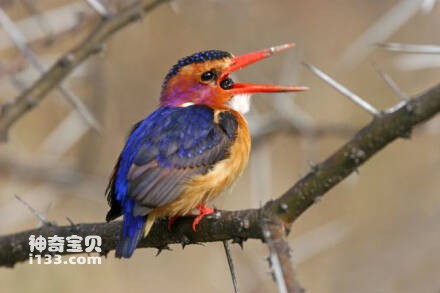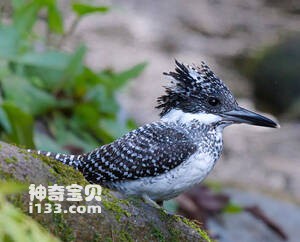
Corythornis cristatus
Corythornis cristatus,Malachite Kingfisher
Corythornis cristatus, Malachite Kingfisher, Alcedo cristata, has three subs···

Alcedo leucogaster
Alcedo leucogaster,White-bellied Kingfisher
White-bellied Kingfisher: Corythornis leucogaster, Alcedo leucogaster, White···

Ispidina madagascariensis
Ispidina madagascariensis,Ceyx madagascariensis,Madagascan pygmy kingfisher,Alcedo madagascariensis
The scientific name of the small kingfisher is Ispidina madagascariensis, Ce···

Ispidina picta
Ispidina picta,African Pygmy-kingfisher
Ispidina picta (African Pygomy-Kingfisher) has three subspecies (1.Ispidina ···

Ispidina lecontei
Ispidina lecontei,African Dwarf-kingfisher
Ispidina lecontei, African Dwarf kingfisher, has two subspecies (1.Ispidina ···

Chloroceryle aenea
Chloroceryle aenea,Pygmy Kingfisher
Chloroceryle aenea, also known as Pygmy Kingfisher, has two subspecies (1.Ch···

Chloroceryle inda
Chloroceryle inda,Green-and-rufous Kingfisher
Chloroceryle inda, also known as Green-and-rufous Kingfisher, is a species o···

Chloroceryle amazona
Chloroceryle amazona,Amazon Kingfisher
Chloroceryle amazona, the scientific name of the Amazon green fish dog, is t···

Chloroceryle americana
Chloroceryle americana,Green Kingfisher
Chloroceryle americana, also known as Green Kingfisher, has five subspecies ···

Ceryle rudis
Ceryle rudis,Pied kingfisher
Ceryle rudis, Pied kingfisher, has four subspecies (1. The common subspecies···

Ceryle torquata
Ceryle torquata,Megaceryle torquata,Ringed Kingfisher
Ceryle torquata, Megaceryle torquata, Ringed Kingfisher, no subspecies.The b···

Ceryle alcyon
Ceryle alcyon,Belted Kingfisher
Ceryle alcyon, Belted Kingfisher, no subspecies.White-bellies emit clear chi···

Megaceryle lugubris
Megaceryle lugubris,Crested Kingfisher
Crested Kingfisher (Megaceryle lugubris, Crested Kingfisher) has three subsp···

Megaceryle maxima
Megaceryle maxima,Giant Kingfisher
Megaceryle maxima, the foreign name Giant Kingfisher, has two subspecies, on···

Syma megarhyncha
Syma megarhyncha,Mountain Kingfisher
Syma megarhyncha, Mountain Kingfisher, has three subspecies (1.Syma megarhyn···

Syma torotoro
Syma torotoro,Yellow-billed Kingfisher
Syma torotoro, Yellow-billed Kingfisher, has three subspecies (1.Syma toroto···

Todirhamphus pyrrhopygia
Todirhamphus pyrrhopygia,Red-backed Kingfisher
The Red-backed emerald, Todirhamphus pyrrhopygia, or red-backed Kingfisher, ···

Todirhamphus godeffroyi
Todirhamphus godeffroyi,Halcyon godeffroyi,Marquenan Kingfisher
The scientific names of the Mak Island emerald are Todirhamphus godeffroyi, ···

Todirhamphus gertrudae
Todirhamphus gertrudae,Tuamotu Kingfisher,Niau kingfisher
Its scientific name is Todirhamphus gertrudae, its foreign name is Tuamotu K···

Todirhamphus veneratus
Todirhamphus veneratus,Society kingfisher,ahiti kingfisher
Todirhamphus veneratus, Society kingfisher, ahiti kingfisher, with two subsp···

Todirhamphus ruficollari
Todirhamphus ruficollari,Halcyon ruficollaris,Mewing kingfisher
Cook Islands emerald scientific name Todirhamphus ruficollari, Halcyon rufic···
